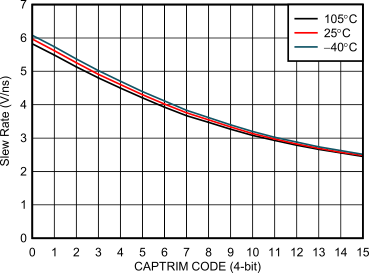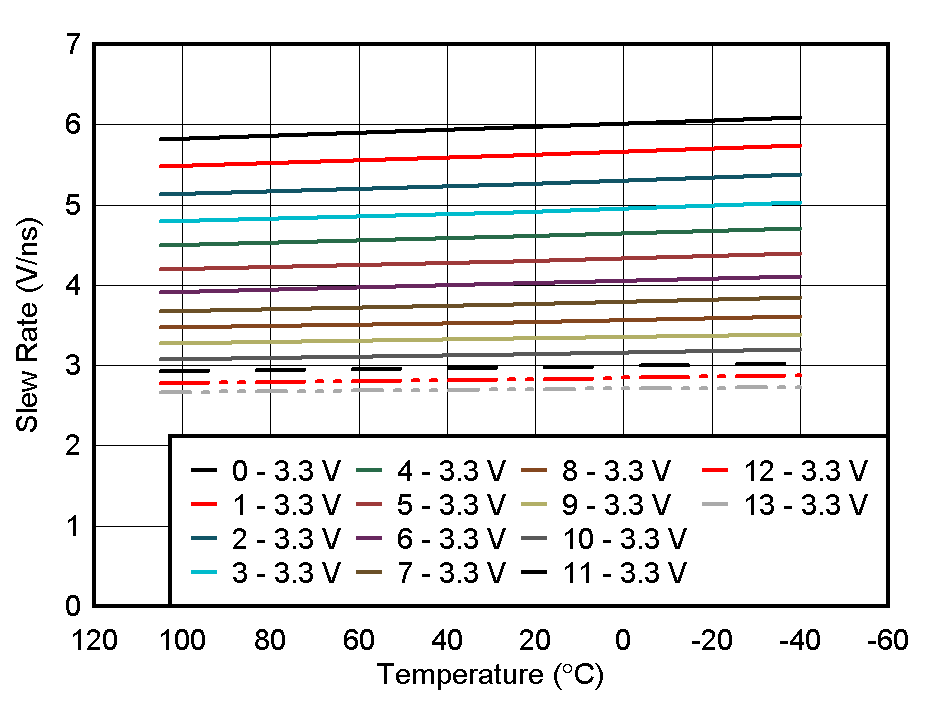SNAS833A November 2021 – May 2022 CDCDB400
PRODUCTION DATA
- 1 Features
- 2 Applications
- 3 Description
- 4 Revision History
- 5 Pin Configuration and Functions
- 6 Specifications
- 7 Parameter Measurement Information
- 8 Detailed Description
- 9 Application and Implementation
- 10Power Supply Recommendations
- 11Layout
- 12Device and Documentation Support
- 13Mechanical, Packaging, and Orderable Information
Package Options
Mechanical Data (Package|Pins)
- RHB|32
Thermal pad, mechanical data (Package|Pins)
- RHB|32
Orderable Information
9.2.3 Application Curves
Figure 6-1 in the Typical Characteristics section can be used as both an application curve and a typical characteristics plot in this example.
The Figure 9-2 and Figure 9-3 show characterization data for the Output slew rate for various CAPTRIM codes and across temperature. Customers can use these plots as reference for choosing the appropriate output slew rate based on their system requirement.
 Figure 9-2 Output Slew Rate vs. CAPTRIM Code
Figure 9-2 Output Slew Rate vs. CAPTRIM Code
Figure 9-3 Slew Rate Variation Across Temperature for Different CAPTRIM Code